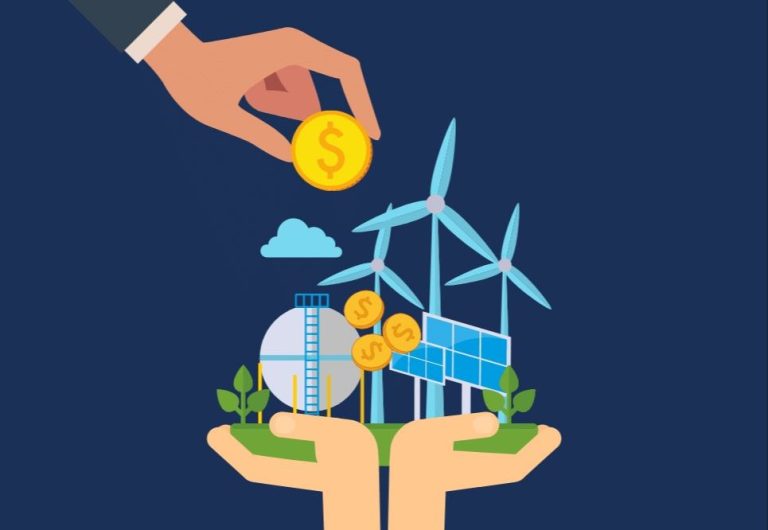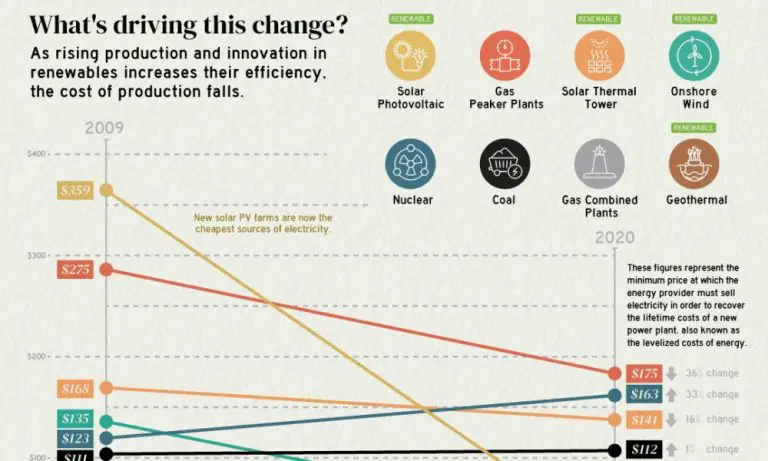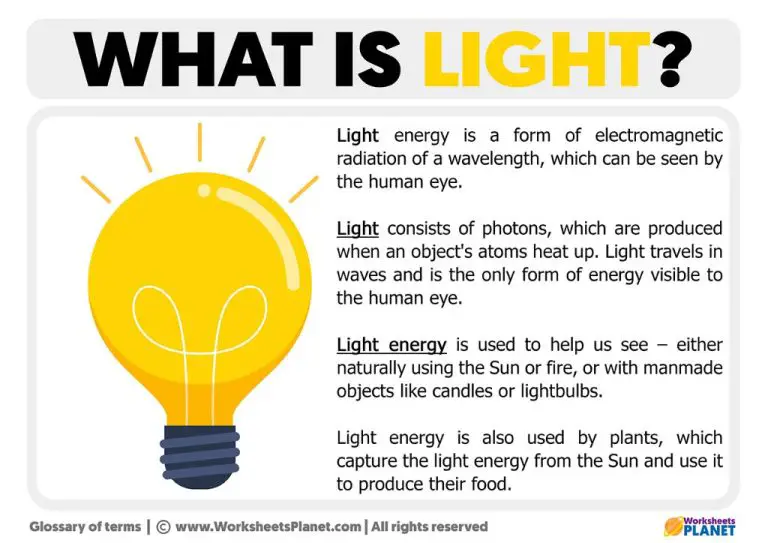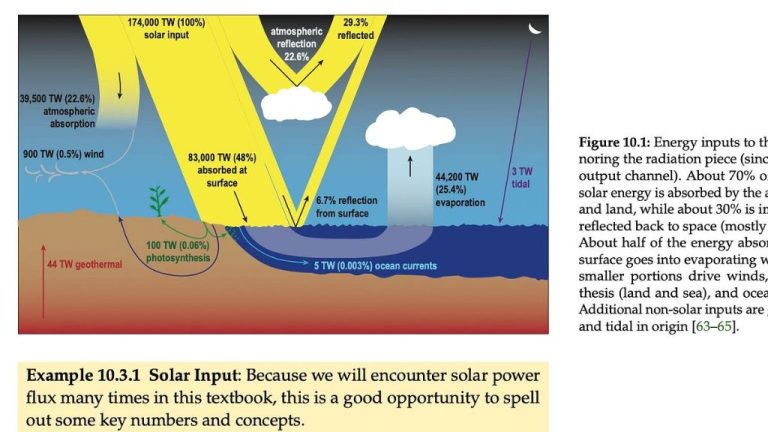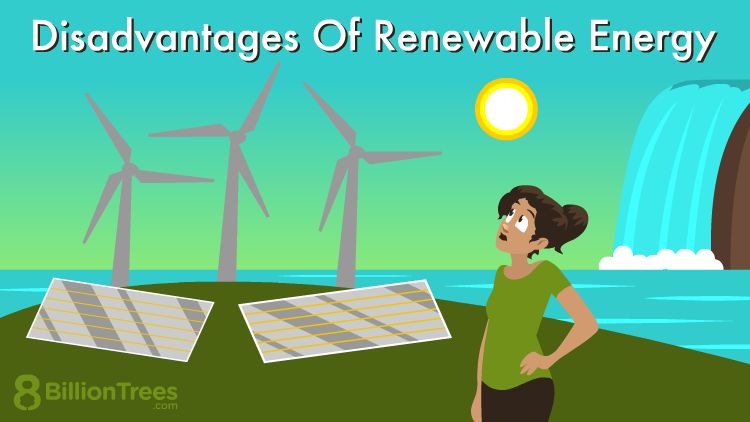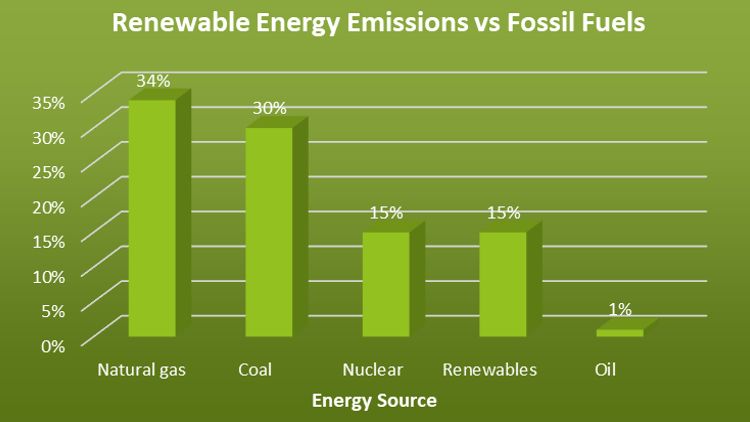What Are 5 Negative Things About Renewable Energy?
High Upfront Costs
Renewable energy sources like solar and wind power require large initial investments in equipment and installation before they can generate electricity. According to Forbes, installing solar panels on a home costs between $5,400 and $18,000 depending on system size and other factors. Similarly, NerdWallet reports costs of $2.50 to $3.50 per watt for solar installation. While solar and wind pay for themselves over time, the steep upfront costs can deter adoption, especially for lower income households.
Intermittency
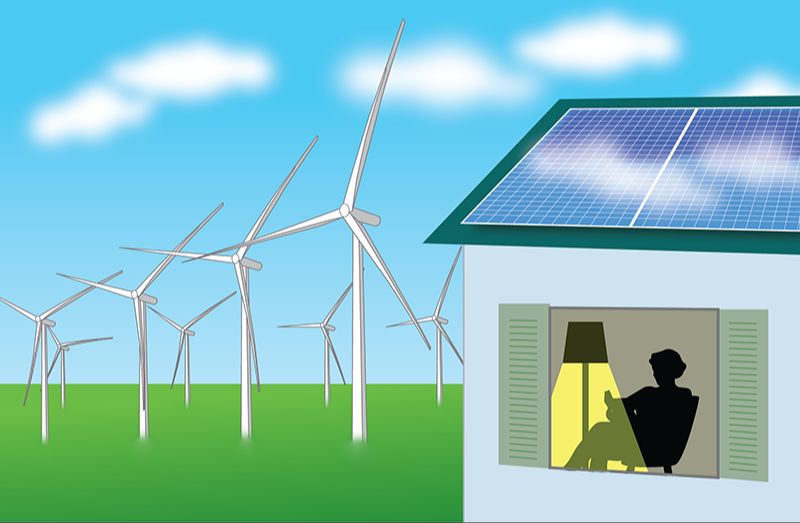
One of the challenges with renewable energy sources like solar and wind is that they are intermittent, meaning they only produce energy when the conditions are right (Scientific American, 2015). The sun shines during the day, but not at night, so solar panels don’t generate electricity at night. Wind turbines produce energy when the wind is blowing at sufficient speeds, but not when the air is still.
This intermittency causes issues for relying on renewable sources for constant power generation needed for electricity grids. Unlike conventional fossil fuel plants that can provide consistent power by burning fuels whenever needed, solar and wind farms can’t control when their resources are available. Grid operators have to adjust to accommodate these variable resources. This has led to challenges in integrating high levels of renewables and maintaining reliable grid operation.
Solutions for intermittency include improved forecasting of renewable generation, flexible backup power sources, grid storage, and better coordination over wider geographic areas. But intermittency remains an obstacle to the widespread adoption of renewables like solar and wind.
Storage Limitations
One of the key challenges with renewable energy sources like solar and wind is that they are intermittent – the sun doesn’t always shine and the wind doesn’t always blow when energy is needed. This creates a need for energy storage to capture and retain energy when it is generated so it can be used later when demand rises. However, storing large amounts of energy from renewable resources has proven difficult.
According to a report, current battery storage technology faces limitations in terms of capacity and costs that prevent renewable energy from fully displacing fossil fuels. Lithium-ion batteries degrade over time and are still prohibitively expensive for grid-scale storage. Other options like pumped hydro require specific geographic conditions.
Without improved energy storage capabilities, the growth of renewable energy will be constrained by the need to have backup power sources when the sun sets or wind dies down. Developing more effective and affordable large-scale energy storage solutions is critical to increase renewable energy adoption and reduce reliance on fossil fuels.
Transmission Challenges
One challenge with renewable energy is that it often needs to be transported long distances to connect generation with end users. Many prime locations for renewable generation like solar, wind, and geothermal are located in remote areas far from cities and population centers. This requires major investments in new transmission lines and infrastructure to deliver the power. As noted in a Canary Media article, permitting issues and a shortage of transmission capacity are hampering clean energy growth in the U.S. Building out transmission is difficult due to geographic barriers, high costs, and regulatory hurdles like acquiring rights-of-way. The longer the transmission distance, the more power is lost along the way. Upgrading and expanding transmission will be a key challenge as we shift to a more renewable grid.
Resource Limitations
Renewable energy sources are dependent on natural resources like sunlight, wind, and water flow that have inherent limitations in their availability. The amount of solar energy that can be captured is restricted by seasonal and daily variations in sunlight. Similarly, the power generated from wind turbines is subject to fluctuating wind speeds and patterns. Hydropower potential is capped by geography and water availability constraints. Most experts estimate that in total, these resource limitations restrict renewables from realistically providing more than 20-30% of global energy needs using current technologies. There is only so much sunlight, wind and water flow available even if capacity is expanded dramatically. As a result, renewables face physical limits in their scalability to fully replace existing energy sources like fossil fuels.
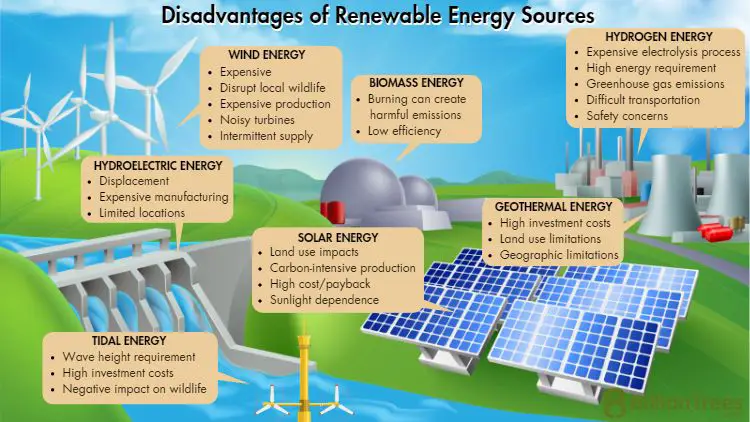
Renewables like wind and solar require much larger land areas than traditional power plants. For example, a utility-scale solar PV plant requires on average between 5-10 acres per megawatt of capacity. So for context, generating just 20% of U.S. electricity from solar would require facility land over the size of Massachusetts or Vermont. (4) Siting renewables can be limited by suitable geography, proximity to transmission, and increasing conflicts with alternative land uses.
Land Use Conflicts
Large renewable energy installations like solar farms, wind farms, and hydropower dams can sometimes conflict with existing agricultural activities, conservation efforts, and local communities. As renewable energy expands, it requires large areas of land for projects like wind and solar farms. According to a report from Brookings, renewable energy accounted for 43% of new U.S. electricity generating capacity from 2011-2018, and much of that capacity was built on open lands. This has raised concerns about land use conflicts with agriculture and conservation lands.
For example, solar and wind farms are often sited on open lands in rural areas, which can take away land used for farming and ranching. Wind turbines and associated infrastructure like roads can also interfere with crop production on agricultural lands. In addition, large renewable projects may impact biologically sensitive habitats and migration corridors. Local communities have also sometimes opposed nearby renewable energy facilities based on concerns about viewshed impacts and reductions in property values.
Strategic land use planning and siting decisions can help minimize conflicts between renewables and other land uses. Options include prioritizing developable and disturbed lands, co-locating projects with agriculture using agrivoltaics, and engaging communities early in the planning process.
Negative Wildlife Impacts
While renewable energy sources like wind and solar are much better for wildlife than fossil fuels overall, some renewables can still negatively impact local ecosystems and wildlife. Wind turbines in particular can harm birds and bats if not properly sited. According to the U.S. Department of Energy, wind turbines can collide with flying wildlife, disrupting migration patterns or causing direct mortality.1 The spinning blades can kill birds and bats that fly into their path. The American Wind Energy Association estimates that wind turbines cause between 214,000 and 368,000 bird deaths annually.2 Proper siting of turbines away from major migration routes and wildlife habitats can help minimize these risks. While negative impacts on wildlife should be minimized, wind energy reduces other threats to wildlife, such as habitat destruction and climate change, that are much greater. Overall, renewable energy development is preferable for wildlife compared to continued reliance on fossil fuels.
Job Losses
The transition from fossil fuels to renewable energy can displace workers in the fossil fuel industry. According to the World Resources Institute, their analysis estimates a net job loss of 900,000 and 1.2 million by 2035 across the fuels sector under different clean energy scenarios (https://www.wri.org/insights/us-jobs-clean-energy-growth). This is because renewable energy often requires fewer workers to operate and maintain. For example, a coal power plant may employ hundreds of workers, while a solar farm of equivalent capacity might only require a few dozen.
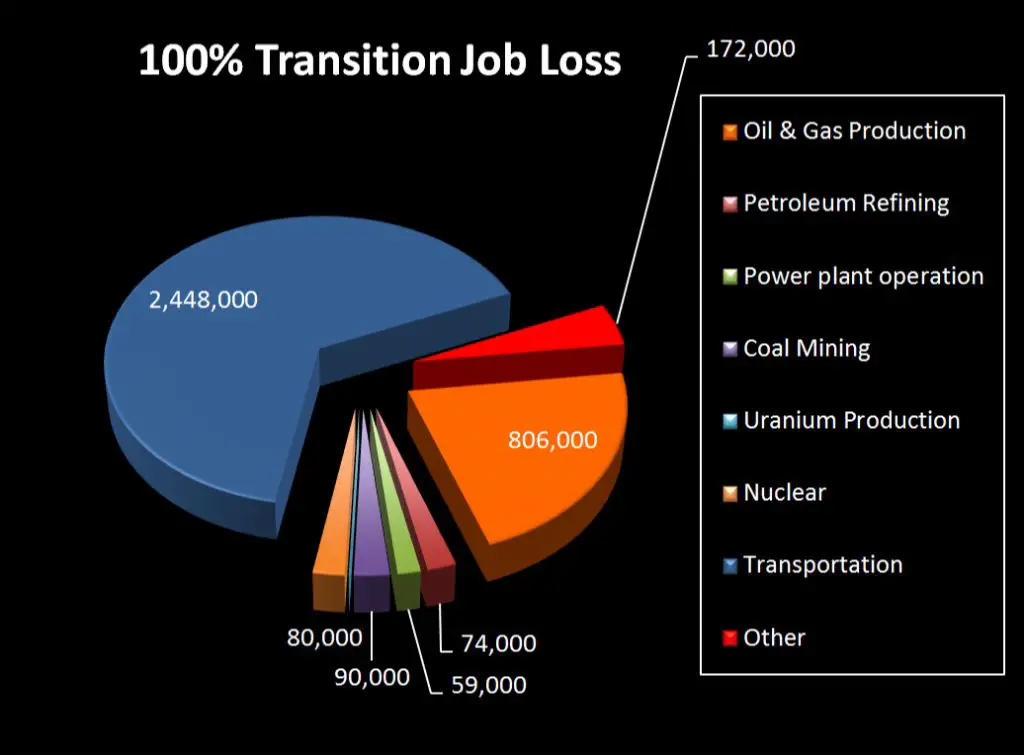
However, job losses in fossil fuels are being offset by job growth in clean energy. According to Forbes, clean energy jobs are booming across the U.S., making up for rising fossil fuel job losses (https://www.forbes.com/sites/energyinnovation/2022/06/29/clean-energy-jobs-are-booming-making-up-for-rising-fossil-fuel-unemployment/). In 2021, the US added 133,000 new jobs in solar, wind, storage, and electric vehicles while shedding 22,000 fossil fuel jobs. Proactive policies to retrain displaced fossil fuel workers could help ease the transition.
Public Opposition
Renewable energy projects sometimes face opposition from local communities, driven by concerns such as negative impacts on views, property values, and the local environment. This “not in my backyard” or NIMBY attitude presents challenges for expanding renewable energy infrastructure.
For example, one study found that 59% of U.S. counties have enacted restrictions on renewable projects, with residential solar facing the most limitations. Public opposition has stalled or halted projects ranging from wind farms to utility-scale solar. Factors driving opposition include concerns over noise, views, wildlife impacts, and decreases in property values near projects.
Overcoming local opposition requires understanding community concerns and identifying solutions to address them. Developers can engage the public early, provide accurate information, offer community benefits, and make project adjustments to gain acceptance. With thoughtful siting and genuine community engagement, renewable projects can gain public support.
Higher Prices
Adding renewables can increase electricity prices, at least initially. A study by the International Monetary Fund found that renewable energy is associated with a significant 0.6% average increase in wholesale electricity prices in Europe (IMF, 2022). This is likely due to the high upfront capital costs required for building renewable energy infrastructure. Renewable energy technologies like wind and solar have become much cheaper over time, but integrating them into the grid still requires substantial investment. This gets passed on to consumers through their electricity rates.
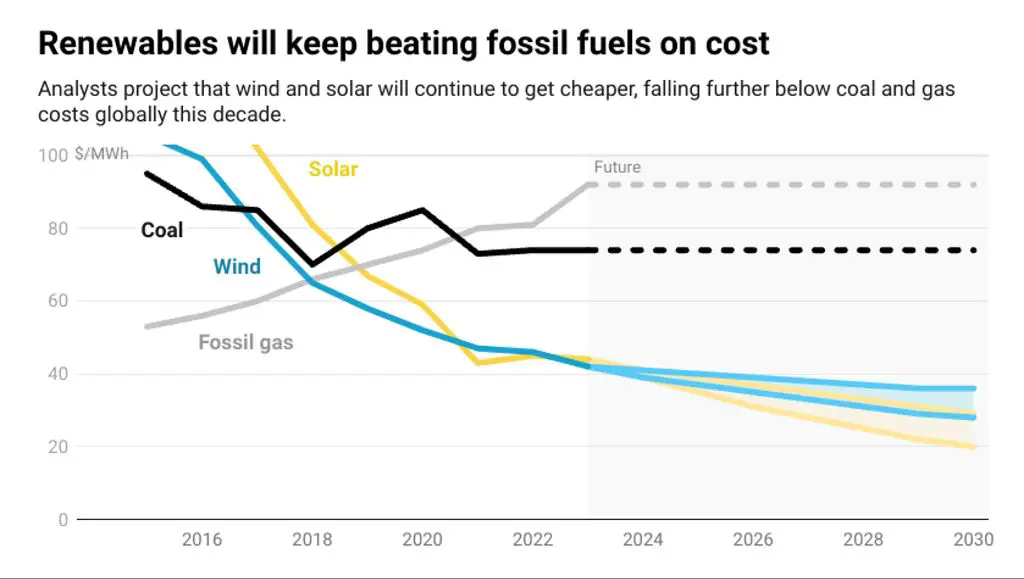
However, the same IMF study found the long-term impact of renewables on prices is reduced over time after the initial infrastructure is built. And the cost declines for wind and solar technology mean that price increases from adding renewables should diminish going forward (Forbes, 2019). So while prices may rise initially, renewable energy should lead to lower electricity costs over the long term.

